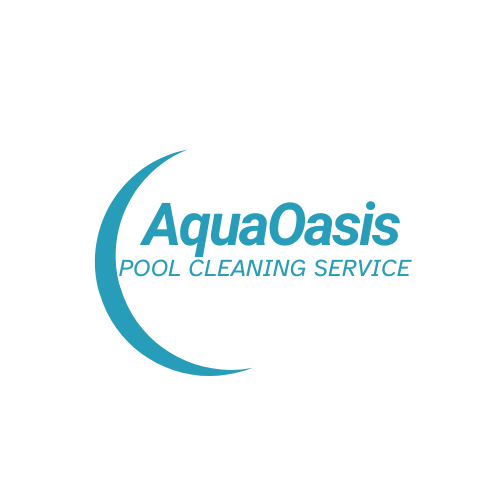Why Your Pool Is Green And How To Fix It
How To Fix A Green Swimming Pool

Is your Tampa pool looking more like a swamp than a refreshing oasis? Don't panic! A green pool is a common issue that many pool owners face, but it's one that can be solved with the right approach. The key to tackling a green pool is prompt action and professional expertise, which is where Aqua Oasis Pool Cleaning Service in Tampa comes in handy.
Green pool water is often caused by algae growth, which thrives in warm, stagnant water with imbalanced chemical levels. While it's tempting to try DIY solutions, improper treatment can lead to further problems and potentially damage your pool. Professional pool cleaning services have the knowledge and equipment to quickly diagnose the issue and implement effective solutions, saving you time and frustration.
When you notice your pool turning green, it's crucial to address the problem immediately. Ignoring it can lead to more severe issues and higher costs down the line. Regular maintenance and professional cleaning services can prevent these issues from occurring in the first place, ensuring your pool remains crystal clear and inviting all season long.
Key Takeaways
- Prompt action is essential when dealing with a green pool to prevent further issues
- Professional pool cleaning services offer expertise and efficient solutions for green pool problems
- Regular maintenance can prevent green pool issues and keep your water clean and inviting
Understanding Your Green Pool
A green pool can be frustrating, but understanding the causes is key to effective treatment. Several factors contribute to this unsightly issue, ranging from algae growth to chemical imbalances.
Factors Contributing to Pool Discoloration
Algae growth is the primary culprit behind green pool water. These microscopic organisms thrive in warm, nutrient-rich environments. Insufficient sanitizer levels, poor circulation, and high phosphate content create ideal conditions for algae to flourish.
Rain can introduce contaminants and dilute pool chemicals, disrupting the water balance. Debris like leaves and grass clippings provide food for algae, accelerating their growth.
Sunlight exposure also plays a role. UV rays break down chlorine, reducing its effectiveness in combating algae. This is why pools often turn green faster during hot, sunny periods.
The Impact of Algae on Your Pool
Green algae are the most common type found in pools. They can turn your water from crystal clear to murky green in just a day or two. Algae make your pool unsafe for swimming by harboring bacteria and other harmful microorganisms.
These organisms clog filters, reducing circulation and further compromising water quality. They can also stain pool surfaces if left untreated for extended periods.
Algae growth increases your pool maintenance costs. You'll need more chemicals and energy to run filtration systems longer to combat the issue.
Chemical Imbalance: Chlorine and PH Levels
Proper chemical balance is crucial for preventing green pool water. Chlorine is your primary defense against algae. Aim to maintain free chlorine levels between 1-3 ppm (parts per million).
pH levels also play a vital role. Ideal pH range is 7.2-7.8. When pH is too high or low, it reduces chlorine's effectiveness, allowing algae to thrive.
Test your pool water regularly, at least 2-3 times per week during peak season. Adjust chemicals as needed to maintain proper balance.
Remember, prevention is easier than treatment. Regular maintenance and prompt addressing of chemical imbalances can save you time and money in the long run.
Solving the Green Pool Challenge
Green pool water can be a frustrating issue for pool owners. With the right approach, you can restore your pool to its crystal-clear state and prevent future algae growth.
Step-by-Step Guide to Restoring Your Pool
- Test your pool water to check pH, chlorine, and other chemical levels.
- Adjust pH to between 7.2 and 7.6 using pH increasers or decreasers.
- Brush the pool walls and floor thoroughly to loosen algae.
- Shock your pool with a high-quality chlorine shock product.
- Run your pool filter continuously for 24-48 hours.
- Add algaecide to prevent new algae growth.
- Retest water and adjust chemicals as needed.
- Vacuum any remaining debris from the pool floor.
By following these steps, you can effectively combat green water and restore your pool's clarity.
When to Seek Professional Help
If your DIY efforts don't yield results after a few days, it's time to call a professional pool cleaning service. Professional help is recommended when:
- Algae persists despite proper treatment
- You're unsure about chemical handling
- Your pool equipment isn't functioning correctly
- You lack the time or tools for thorough cleaning
Aqua Oasis, a trusted pool cleaning service in Tampa, has the expertise and equipment to tackle even the toughest green pool challenges. Their professionals can quickly diagnose the problem and implement effective solutions.
Preventative Measures for Long-Term Pool Health
To keep your pool clear and algae-free:
- Maintain proper chemical balance weekly
- Run your pool filter at least 8-12 hours daily
- Brush pool walls and floor regularly
- Shock your pool every 1-2 weeks
- Clean your pool filter as recommended
- Keep pool area clear of debris
Implementing these practices will help maintain water quality and reduce the likelihood of future algae blooms. Regular pool maintenance is key to preventing green water and ensuring a safe, enjoyable swimming environment.
You might also like
All Rights Reserved | Aqua Oasis Pool Cleaning Service Tampa

